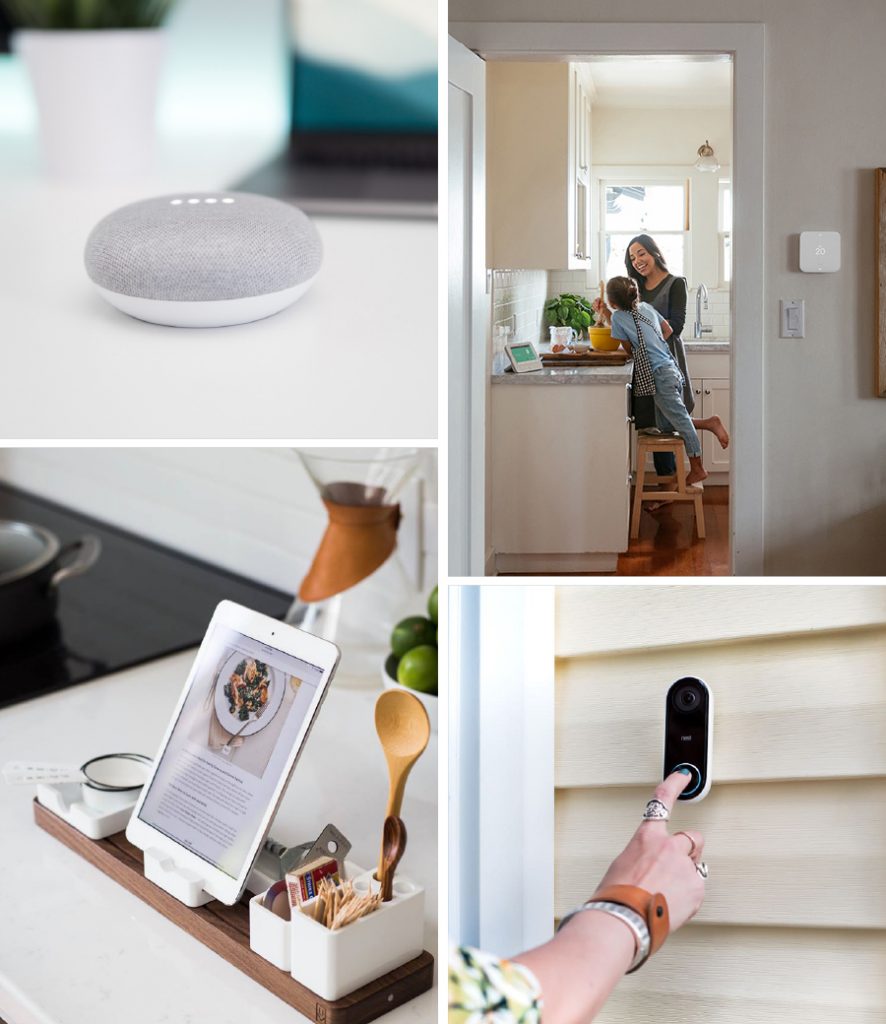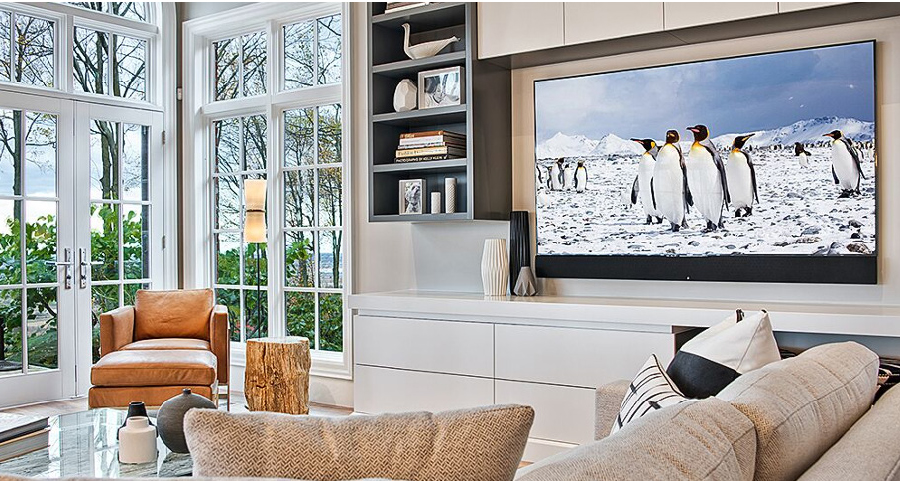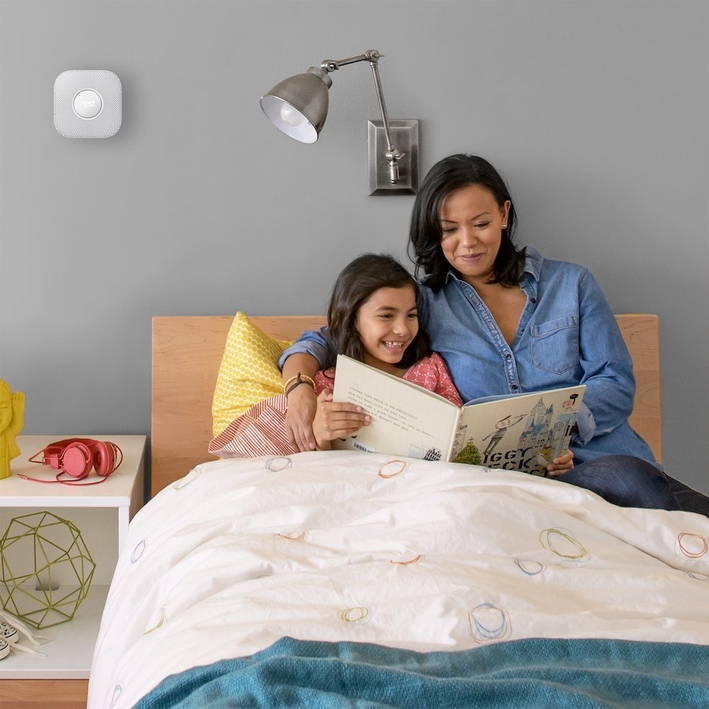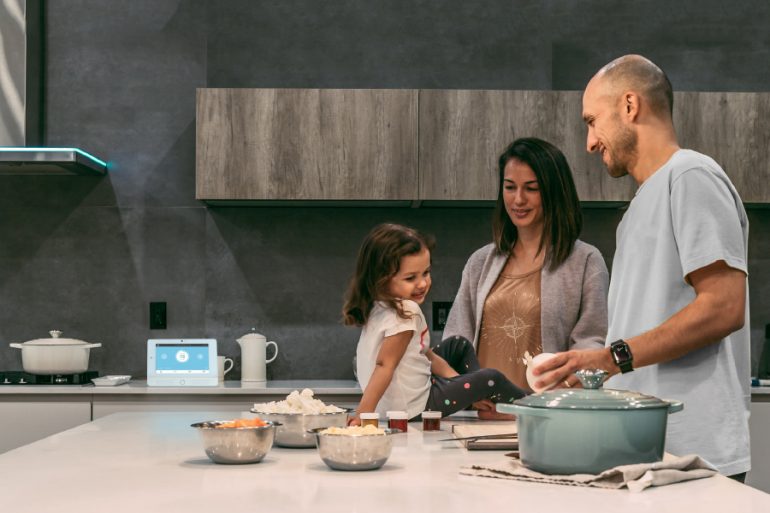Imagine coming home at night just after dusk and the exterior lights are already on to pre-set levels. As you enter your code into the door lock, your alarm is deactivated and the lights inside turn on to guide you into the kitchen – and on the TV, your favourite evening program is playing. Upon retiring to bed, you hit ‘bedtime’ on the touchscreen remote – this turns off all of the TVs in the home, all of the overhead lights, and lights a pathway on the stairs. The security alarm is set. Your home is asleep and safe —all from the touch of a single button.
In the morning, your shades open at sunrise easing you gently into the next workday. When leaving for the day, no need to run around to turn off lights, TVs, or adjust the blinds – you just hit ‘goodbye’ on the touch screen as you walk out the door. The alarm is set, TVs and lights are off, the shades follow the sun and open/close as needed, all on their own. Unless, of course, you get to work and realize that you forgot to lock the door, in which case, there’s an app for that too… With a smart home system, when you’re not at home, you’re never really away from home. When the doorbell rings, you can check your security cameras from your phone just to make sure all is safe and sound. When your teenager comes home from school, you can make sure they’re eating the dinner you left in the fridge rather than ordering in a pizza. Smart home technology is nothing more than security and solutions.

This is how Sarah Love of PM WYRE in Burlington describes the benefits of a fully-automated smart home. In short, Love says “A fully automated smart home is a seamless integration of technology into our lives, in which the everyday tasks are simplified into non-existence.” Robert May of Sounds Good AVS Solutions in Oakville agrees, “If the product and system are done right, there shouldn’t be a learning curve. It should involve hitting one or two buttons and having it work.”
When it comes to choosing a system, both Love and May say each home and homeowner has unique needs – and the notions of ‘smart’ accessories can vary widely. Using a smart home professional such as PM WYRE or Sounds Good AVS Solutions, and scheduling a home visit is key to understanding where to start with a system. “Smart home technology is not a cookie-cutter solution,” says Love, adding, “Each smart home should be designed with the clients’ needs, and lifestyle in mind – no matter the size of the system.”

Before meeting with a professional, however, there are some things to consider, such as how you use each room, if you would like remote access, and if there are other people in and out of the home. There are so many options available and it’s just about finding the right solution for your needs.

Home automation systems have come a long way from a simple security system, and today they include everything from entertainment, such as audio, video, television and music; comfort which includes lighting, climate control, and motorized window shades; security with a twist, which means not only protecting homeowners from burglary, but also flooding, leaks, natural gas, CO2, smoke and heat; and wellness, such as air filtration, and monitoring the overall quality of the home, including water. Thinking about how you would like to incorporate each of those monitoring methods or smart solutions into your home can help determine the type of system that would work best for you and your family.
Whatever level of technology you’re looking to embrace, May says going smart should provide a solution to a problem, not create more problems or headaches for homeowners.
The next time you’re at work wondering if you left the door unlocked or forgot to feed the dog, consider the benefits of smart technology – the freedom and flexibility will leave you liberated.
by Allison Dempsey & Anneliese Lawton
Local Links
PM WYRE, Burlington
Pmwyre.com
Sounds Good AVS Solutions, Oakville
Soundsgoodinc.ca
Smart Tech Outlet, Burlington
Techachi.com
Oakville Sight and Sound, Oakville
Oakvillesightandsound.ca
Digital 21, Burlington
digital21.ca






